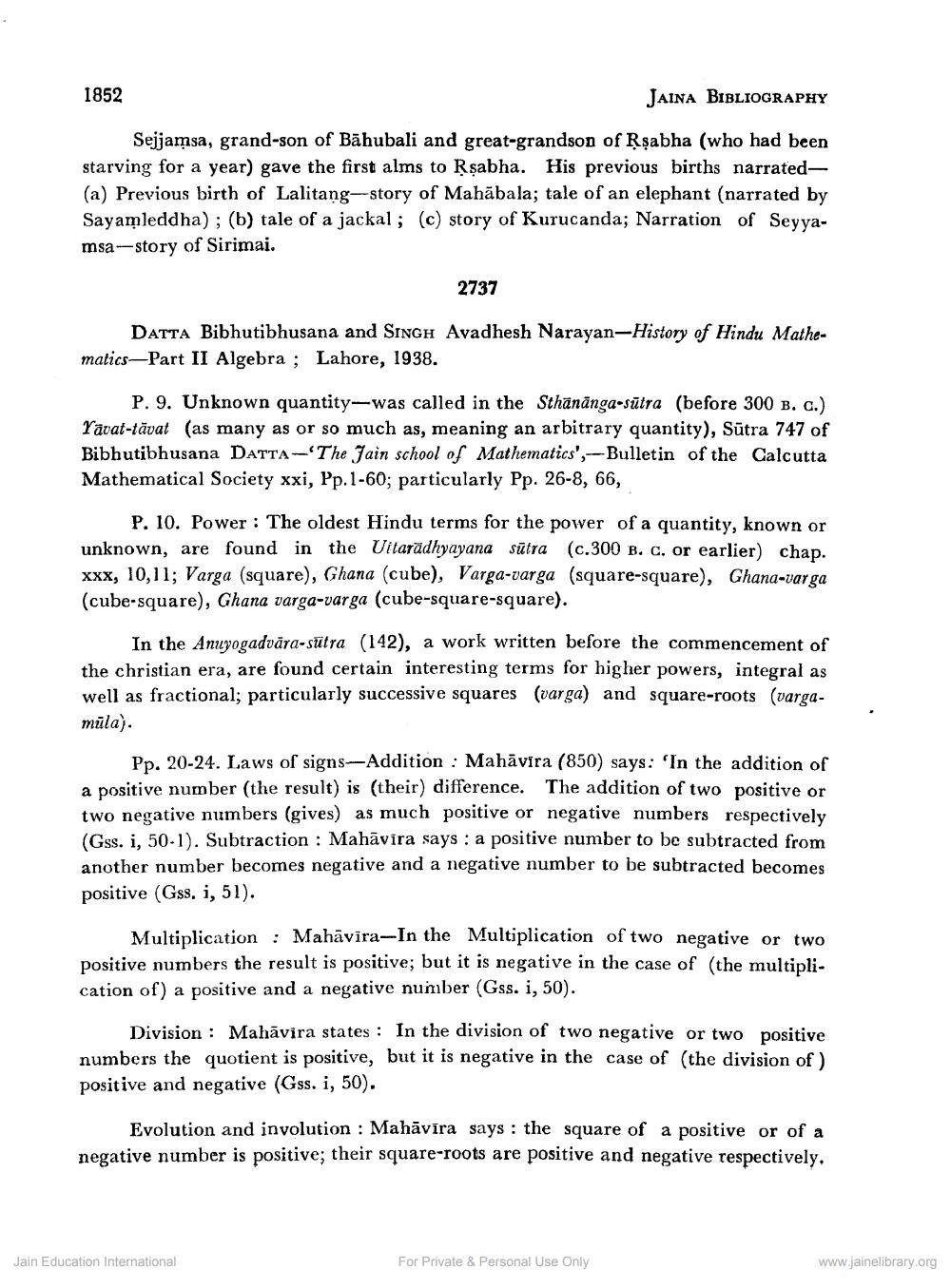________________
1852
JAINA BIBLIOGRAPHY
Sejjamsa, grand-son of Bāhubali and great-grandson of Rşabha (who had been starving for a year) gave the first alms to Rsabha. His previous births narrated(a) Previous birth of Lalitang--story of Mahābala; tale of an elephant (narrated by Sayamleddha); (b) tale of a jackal; (c) story of Kurucanda; Narration of Seyyamsa-story of Sirimai.
2737
DATTA Bibhutibhusana and SINGH Avadhesh Narayan-History of Hindu Mathematics—Part II Algebra ; Lahore, 1938.
P. 9. Unknown quantity-was called in the Sthānānga-sūtra (before 300 B. C.) Yavat-tāvat (as many as or so much as, meaning an arbitrary quantity), Sūtra 747 of Bibhutibhusana DATTA-'The Jain school of Mathematics',-Bulletin of the Calcutta Mathematical Society xxi, Pp.1-60; particularly Pp. 26-8, 66,
P. 10. Power : The oldest Hindu terms for the power of a quantity, known or unknown, are found in the Uitaradhyayana sūtra (c.300 B. c. or earlier) chap. xxx, 10,11; Varga (square), Ghana (cube), Varga-varga (square-square), Ghana-varga (cube-square), Ghana varga-varga (cube-square-square).
In the Anuyogadvāra-sūtra (142), a work written before the commencement of the christian era, are found certain interesting terms for higher powers, integral as well as fractional; particularly successive squares (varga) and square-roots (vargamüla).
Pp. 20-24. Laws of signs--Addition : Mahāvira (850) says: 'In the addition of a positive number (the result) is (their) difference. The addition of two positive or two negative numbers (gives) as much positive or negative numbers respectively (Gss. i, 50-1). Subtraction : Mahāvīra says: a positive number to be subtracted from another number becomes negative and a negative number to be subtracted becomes positive (Gss, i, 51).
Multiplication : Mahāvira-In the Multiplication of two negative or two positive numbers the result is positive; but it is negative in the case of (the multiplication of) a positive and a negative number (Gss. i, 50).
Division : Mahāvira states : In the division of two negative or two positive numbers the quotient is positive, but it is negative in the case of the division of positive and negative (Gss. i, 50).
Evolution and involution : Mahāvīra says: the square of a positive or of a negative number is positive; their square-roots are positive and negative respectively.
Jain Education International
For Private & Personal Use Only
www.jainelibrary.org




